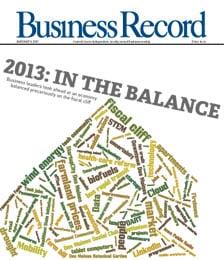With a profit, CE Software is slowly rebounding

The world is brightening for CE Software Inc., the software developer whose existence nearly came to an end in the waning months of 2001, when its sales slowed to a trickle and its cash nearly dried up.
The company, whose programs help users increase the productivity of their computers, logged a profit in its fiscal fourth quarter, which ended Sept. 30. It was CE Software’s first profitable quarter in more than two years. More promising, it capped a year in which the company consistently narrowed its losses.
This year, the company is planning to release new versions of two software products that are part of a strategy it hopes will lead it back to consistent profits.
Investors have been optimistic. The stock, which is thinly traded on the OTC Bulletin Board, last week cost about 21 cents a share. Though that is off its 52-week high of 61 cents, which was set on Nov. 8, the price is still more than double the 10 cents it traded at a year ago.
“We’re in a rebuilding process now,” said John Kirk, who helped found CE Software and currently serves as its president and chief executive.
Net income for the fourth quarter was $2,000. During the same period a year ago, the company had a loss of $468,000, or 32 cents a share. Sales rose 34 percent to $425,000 from $318,000.
For the year, the CE Software’s loss narrowed to $221,000 from $1.21 million last year. Sales for fiscal 2002 rose to $1.65 million from $1.55 million the year before.
The company’s current situation is far from where it was 10 years ago. Then, it had $8.64 million in annual sales and 80 employees and made Inc. magazine’s list of the fastest-growing small companies.
At its peak in the mid-1990s, CE Software’s 140 workers filled its entire two-level headquarters, which is located close to Raccoon River Park, and spilled into another building nearby. It sold two divisions, one in 1997 and another in 1999, that combined employed about 50 people.
CE Software’s fortunes began to unravel because of increased competition from Microsoft Corp. in the late 1990s and the bursting of the Internet and telecommunications bubble in early 2000.
The company had been part of CE Software Holdings Inc., which sold itself to Minnesota-based Lightning Rod Software Inc. in April 2000. As part of the transaction, CE Software was spun off as an independent company.
Much of the company’s cash, about $5 million, went with CE Software Holdings to Lightning Rod. Just before the merger, CE Software Holdings raised another $7 million from private investors, giving Lightning Rod about $12 million.
Lightning Rod invested the money, and lost all of it within a year as the companies it invested in filed for bankruptcy, Kirk said.
Next CE Software was hit by the slump in spending for computer hardware and software. Losses mounted.
The picture looked grim for CE Software in the months following the September 2001 terrorist attacks as sales nearly halted. Paychecks for the company’s 30 workers were delayed and some employees moved to a part-time schedule. Ten workers found other jobs and left the company, Kirk said.
For cash, the company executed a refinancing agreement on its West Des Moines headquarters building that netted it about $300,000.
CE Software has retreated to the top floor of the building. The money from the refinancing provided the cushion needed to survive while work wrapped up on upgrades to its software mainstays, QuicKeys and QuickMail, Kirk said. The programs let users create shortcuts for computing tasks, saving time.
Both programs have received a great deal of attention from the computing media and have been lauded by technology columnists at major newspapers, including the Los Angeles Times and the Houston Chronicle. QuicKeys is a profitable product, Kirk said. The problem with QuickMail is competition from Microsoft’s Outlook Express, he said.
Kirk is convinced that to grow, the company must find ways to sell more products to its current customers. Users of QuicKeys and QuickMail don’t tend to overlap, he said.
CE Software programmers are also now concentrating on two programs it purchased, mostly with stock, from West Des Moines-based PrairieSoft Inc. in March 2000. The company hopes the programs, called QuickConference and InOutTracker, will let it sell more to existing clients.
QuickConference lets users communicate securely via instant messaging within a company. InOutTracker helps managers keep tabs on whether employees are in or out of the office. Both products are aimed at small to medium-size companies.
With fewer software programmers, CE Software has had to slow development. Kirk is confident that updated versions of QuickConference and InOutTracker will be ready this year.
“We’re torn between the depression of the contraction and the euphoria of having new products,” Kirk said.







